Abstract
Complement component C6 deficiency (C6D) was diagnosed in 15 patients who presented, independently, with recurrent meningococcal infection. This condition is thus not particularly rare in the Cape. Ten of the patients belonged to multiplex families, and family studies led to the diagnosis of another 12 C6D cases among the siblings. Segregation analysis showed that C6D occurred more frequently among the siblings of affected individuals than would be expected for co-dominant inheritance. The possible reasons for this are discussed. We also observed that the 12 non-proband C6D siblings included only four with a history suggestive of meningococcal infection, and thus C6D individuals apparently differ in susceptibility to Neisseria meningitidis infection. We confirmed previous observations that primary infection occurs later in C6D individuals than amongst susceptible complement-sufficient individuals. Among 123 patients presenting with primary meningitis, one case of C6D was diagnosed. The data show that C6D is an important factor associated with susceptibility to meningococcal infection in the Cape.
Full text
PDF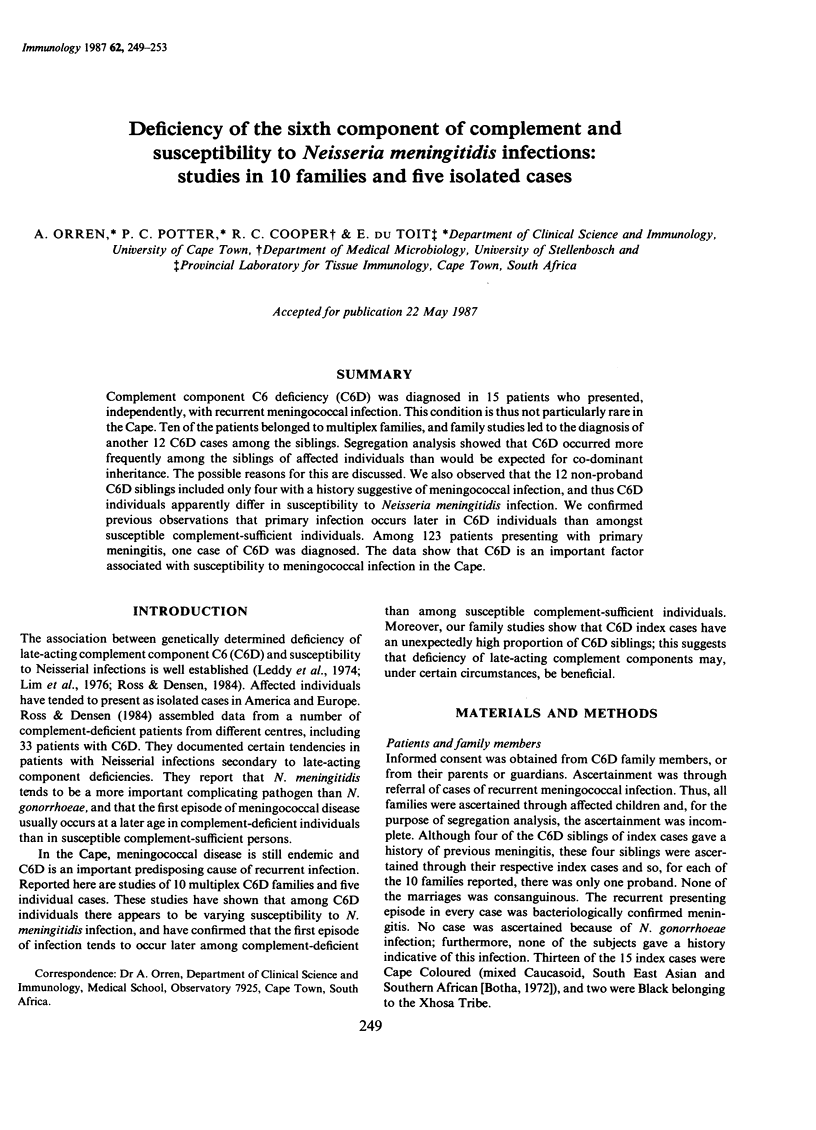
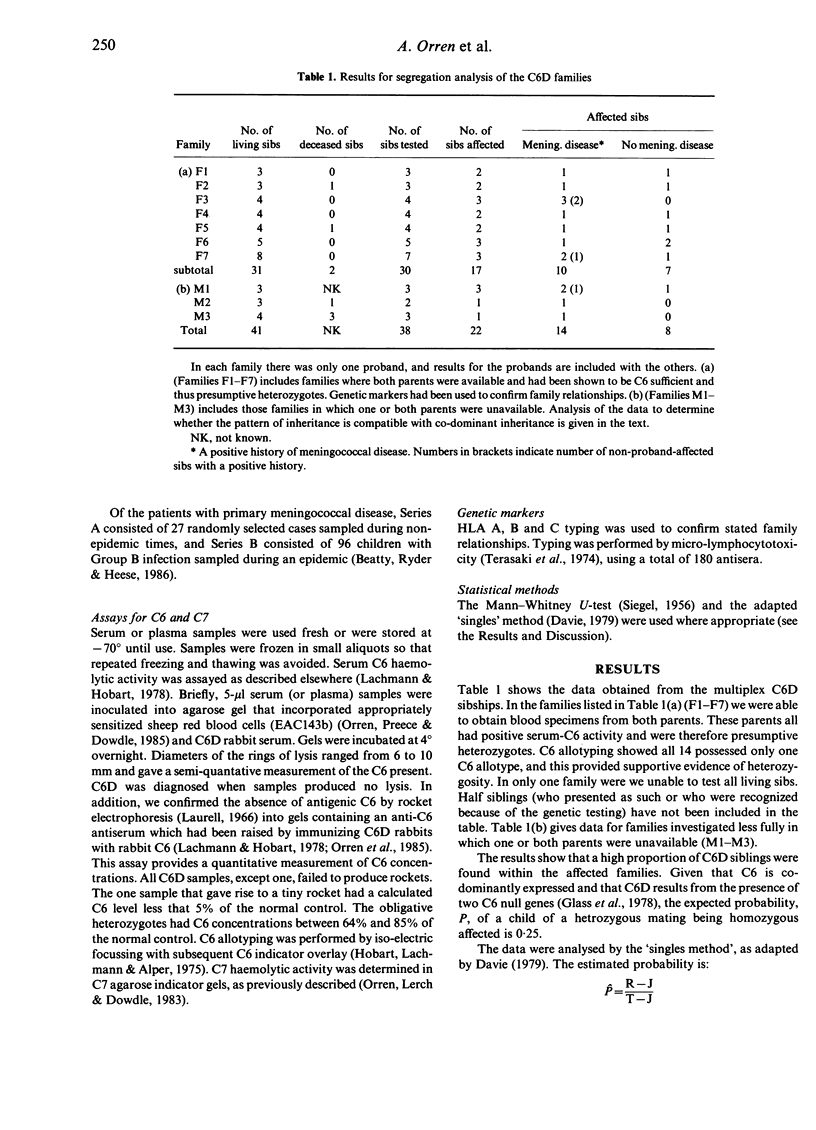
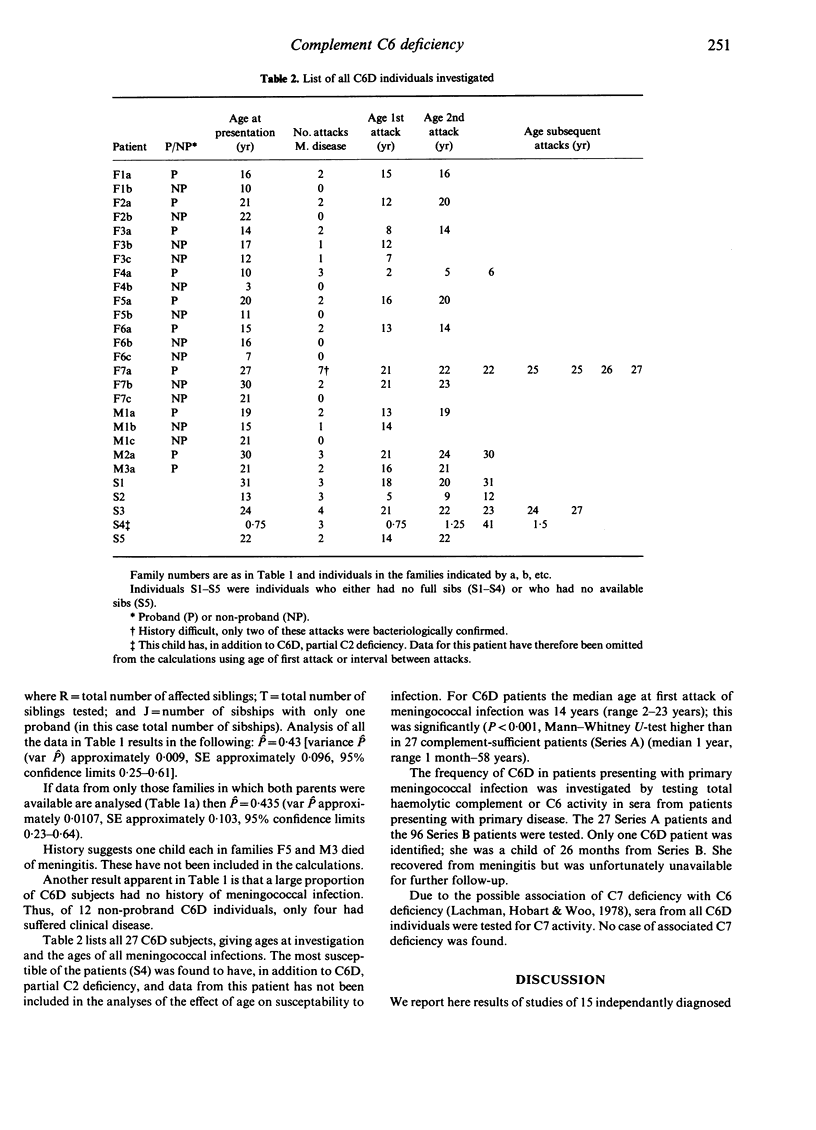
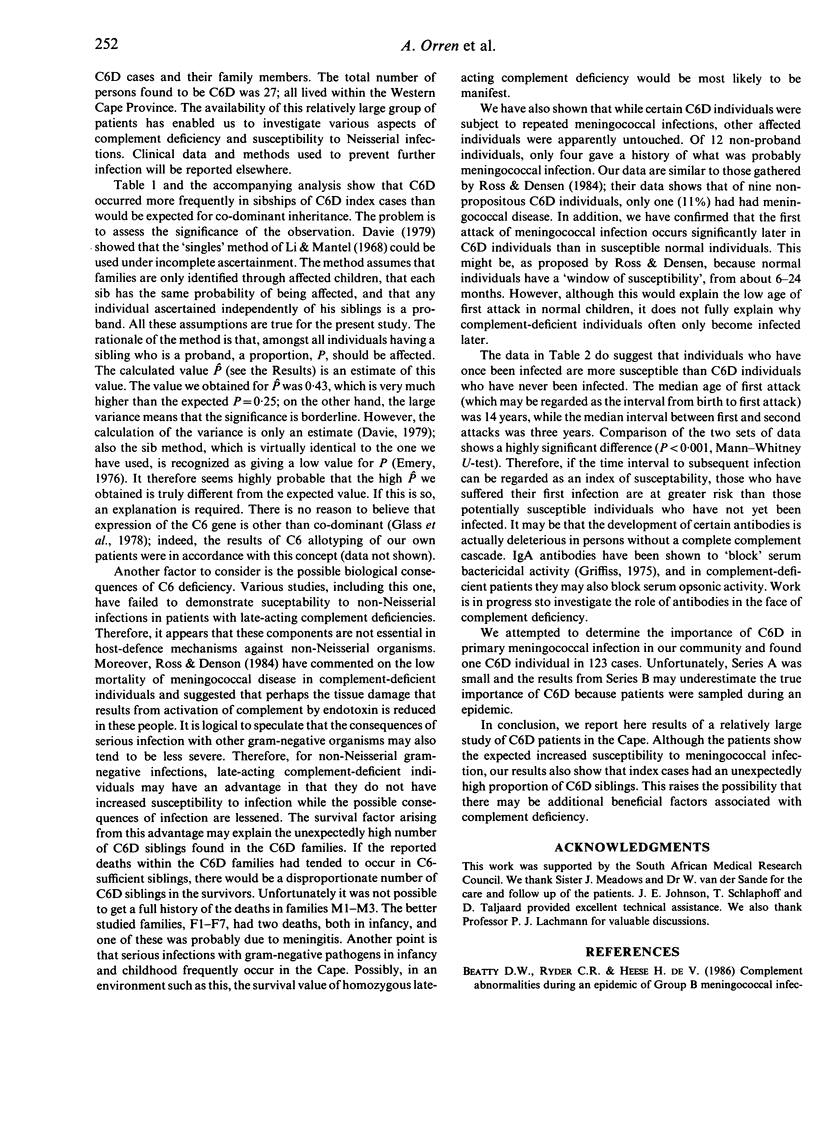
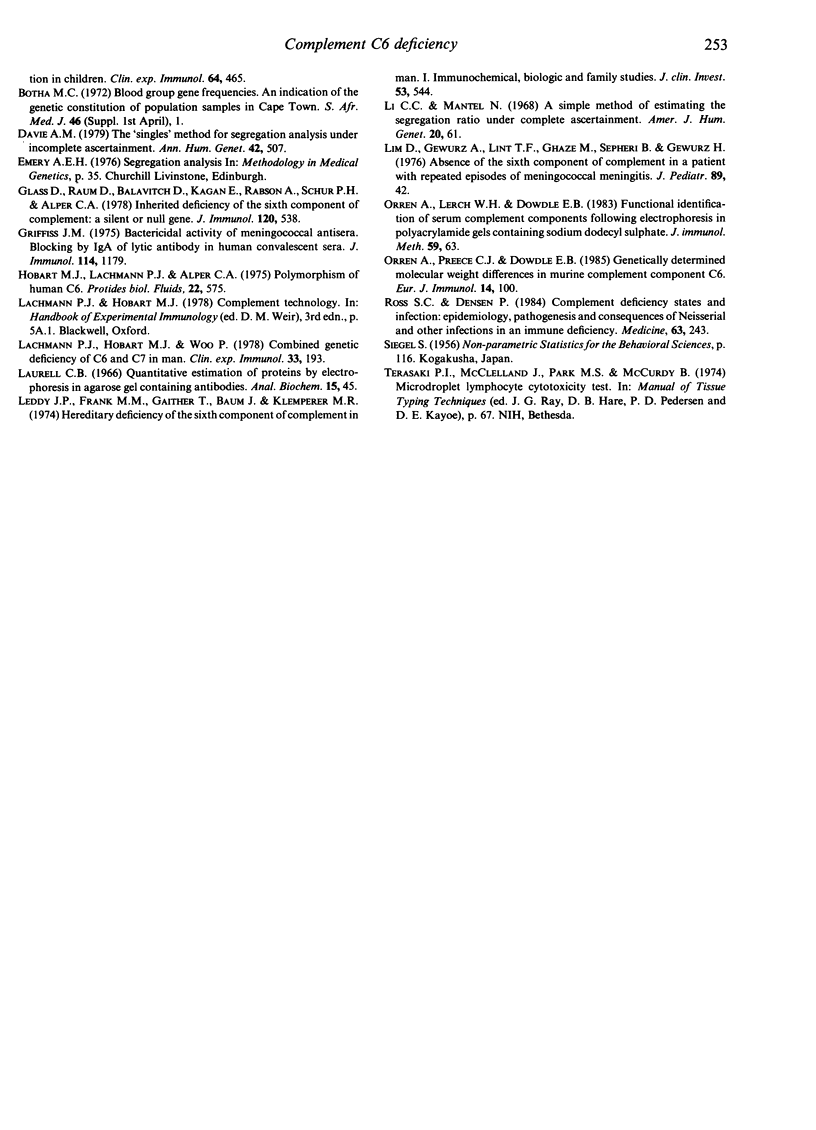
Selected References
These references are in PubMed. This may not be the complete list of references from this article.
- Beatty D. W., Ryder C. R., Heese H. D. Complement abnormalities during an epidemic of group B meningococcal infection in children. Clin Exp Immunol. 1986 Jun;64(3):465–470. [PMC free article] [PubMed] [Google Scholar]
- Davie A. M. The 'singles' method for segregation analysis under incomplete ascertainment. Ann Hum Genet. 1979 May;42(4):507–512. doi: 10.1111/j.1469-1809.1979.tb00683.x. [DOI] [PubMed] [Google Scholar]
- Glass D., Raum D., Balavitch D., Kagan E., Rabson A., Schur P. H., Alper C. A. Inherited deficiency of the sixth component of complement: a silent or null gene. J Immunol. 1978 Feb;120(2):538–541. [PubMed] [Google Scholar]
- Lachmann P. J., Hobart M. J., Woo P. Combined genetic deficiency of C6 and C7 in man. Clin Exp Immunol. 1978 Aug;33(2):193–203. [PMC free article] [PubMed] [Google Scholar]
- Laurell C. B. Quantitative estimation of proteins by electrophoresis in agarose gel containing antibodies. Anal Biochem. 1966 Apr;15(1):45–52. doi: 10.1016/0003-2697(66)90246-6. [DOI] [PubMed] [Google Scholar]
- Leddy J. P., Frank M. M., Gaither T., Baum J., Klemperer M. R. Hereditary deficiency of the sixth component of complement in man. I. Immunochemical, biologic, and family studies. J Clin Invest. 1974 Feb;53(2):544–553. doi: 10.1172/JCI107588. [DOI] [PMC free article] [PubMed] [Google Scholar]
- Li C. C., Mantel N. A simple method of estimating the segregation ratio under complete ascertainment. Am J Hum Genet. 1968 Jan;20(1):61–81. [PMC free article] [PubMed] [Google Scholar]
- Lim D., Gewurz A., Lint T. F., Ghaze M., Sepheri B., Gewurz H. Absence of the sixth component of complement in a patient with repeated episodes of meningococcal meningitis. J Pediatr. 1976 Jul;89(1):42–47. doi: 10.1016/s0022-3476(76)80924-9. [DOI] [PubMed] [Google Scholar]
- Orren A., Lerch W. H., Dowdle E. B. Functional identification of serum complement components following electrophoresis in polyacrylamide gels containing sodium dodecyl sulphate. J Immunol Methods. 1983 Apr 15;59(1):63–71. doi: 10.1016/0022-1759(83)90146-1. [DOI] [PubMed] [Google Scholar]
- Orren A., Preece C. J., Dowdle E. B. Genetically determined molecular weight differences in murine complement component C6. Eur J Immunol. 1985 Jan;15(1):100–103. doi: 10.1002/eji.1830150120. [DOI] [PubMed] [Google Scholar]
- Ross S. C., Densen P. Complement deficiency states and infection: epidemiology, pathogenesis and consequences of neisserial and other infections in an immune deficiency. Medicine (Baltimore) 1984 Sep;63(5):243–273. [PubMed] [Google Scholar]


